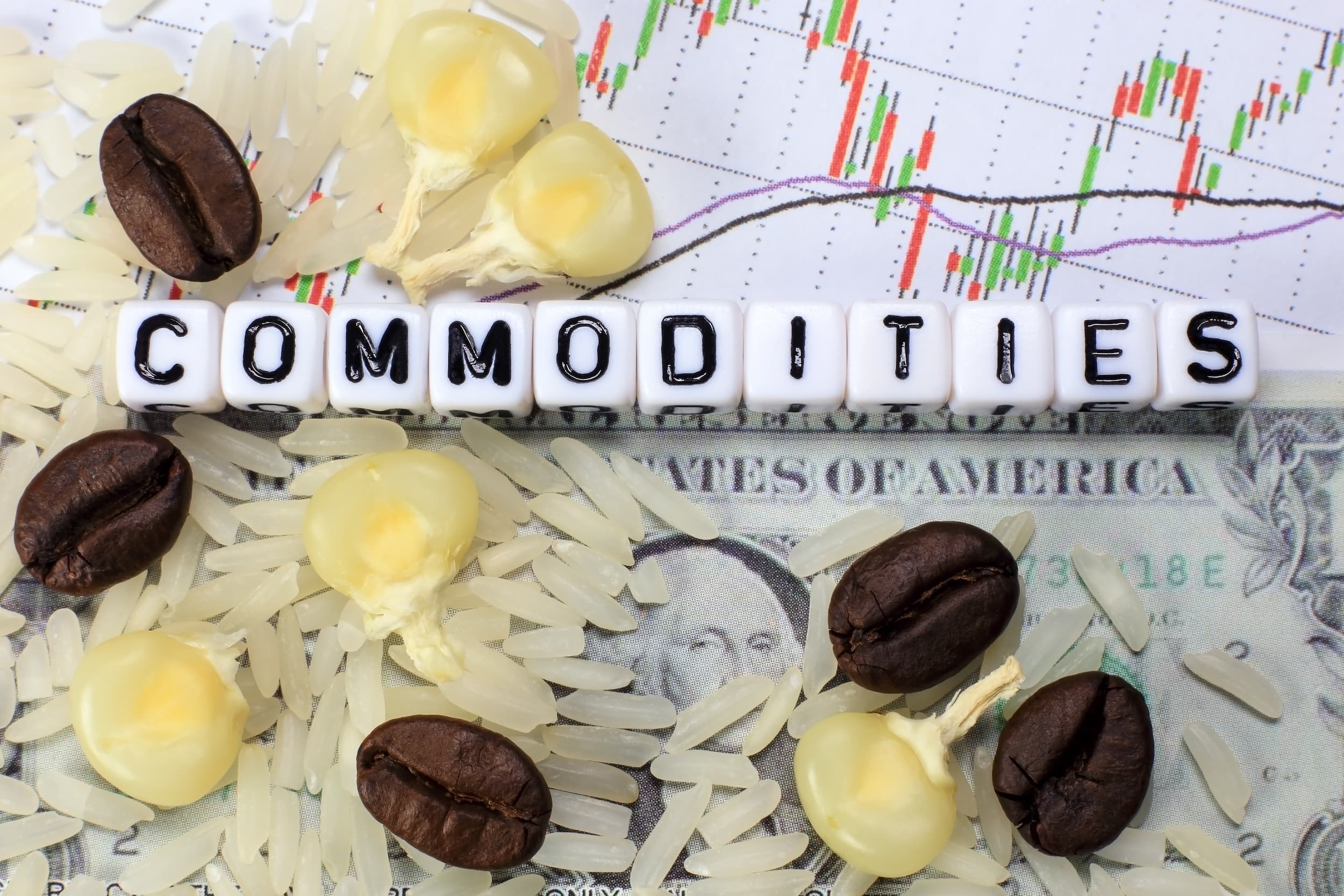
- Current trends
- Investment ideas
3 types of commodities to invest in
Do you want to know how to make money from this?
Register for free and get expert advice, access to a training course and webinars.
Any seasoned investor understands the significance of diversification, ensuring that their investments are not concentrated solely in one asset class. While diversification cannot fully eradicate risk, it can significantly enhance the likelihood of achieving investment objectives by balancing potential losses and gains.
Investors can explore a diverse range of investment vehicles to achieve their financial goals, including stocks, bonds, commodity-focused mutual funds, futures contracts, and currencies.
However, don’t neglect the potential of commodities investment. There are various commodities investment options available to both novice and experienced traders. But before diving into this arena, it’s crucial to grasp the fundamentals of commodities investing, including the selection of suitable commodities for your portfolio.
What is commodity investment?
Commodity trading has a long and rich history, tracing back to a time when spices and silk were exchanged, fostering connections between diverse cultures and societies. This ancient practice has evolved into a modern investment avenue, with individuals seeking to participate in the commodities market through various approaches.
Traders can directly invest in physical commodities, acquiring and storing commodities such as gold or oil. Alternatively, they can opt for indirect involvement by purchasing shares of companies that produce or trade commodities, investing in commodity-focused mutual funds, or holding exchange-traded funds (ETFs) that track the performance of commodity indices.
Advantages of commodities. One of the primary advantages of commodities investment lies in their ability to hedge against inflation. As inflation rates increase, demand for commodities typically rises, driving up their prices. Investing in commodities can also be seen as a bet against the US dollar; when the dollar weakens, commodity prices tend to appreciate.
Commodity risks. On the other hand, commodities are notoriously volatile assets, particularly funds that track a single commodity or a specific economic sector. This heightened volatility poses significant risks for investors.
Based on these considerations, here are three commodity assets that are recommended for those seeking to establish a foothold in this market.
Raw oil
Crude oil prices are primarily influenced by supply and demand dynamics. When demand outpaces supply, prices tend to surge upwards. Conversely, when demand diminishes while supply remains relatively consistent, prices tend to fall.
Oil is an indispensable commodity, serving as the foundation for various industrial products. Once extracted, crude oil undergoes a refining process, resulting in a plethora of derivatives, including gasoline, the primary fuel for transportation. Petroleum also plays a crucial role in manufacturing plastics, pharmaceuticals, linoleum, shingles, ink, cosmetics, synthetic fibers, solvents, fertilizers, asphalt, and countless other products that shape our modern world.
Gold
The gold market is a diverse and dynamic sector, with applications ranging from jewelry and technology to central banking and investor portfolios. Gold’s enduring appeal lies in its traditional role as a safe haven asset and a hedge against inflation. When the US dollar weakens, gold prices typically rise, reflecting its perceived value as a stable store of value.
Similar to crude oil, gold prices respond to changes in demand and supply. As demand for gold increases, so does its price. Additionally, gold prices are influenced by central banks’ decisions to diversify their foreign exchange reserves by purchasing more gold. This strategy is often employed to reduce reliance on the US dollar and mitigate risks associated with currency fluctuations.
Base metals
Base metals, such as aluminum, copper, and zinc, serve as critical components in various commercial and industrial applications, particularly in construction and manufacturing. These metals are relatively inexpensive and their supply is generally stable due to their widespread availability across mining operations worldwide.
Due to their abundance, base metals command significantly lower prices compared to precious metals. Nevertheless, the burgeoning demand for non-ferrous metals, driven by global expansion and particularly from emerging economies like China, continues to exert a positive influence on their prices.
Do you want to know
How to make money from the news
Register for free and get:
- Expert consultation;
- Access to the training course;
- Opportunity to participate in webinars

